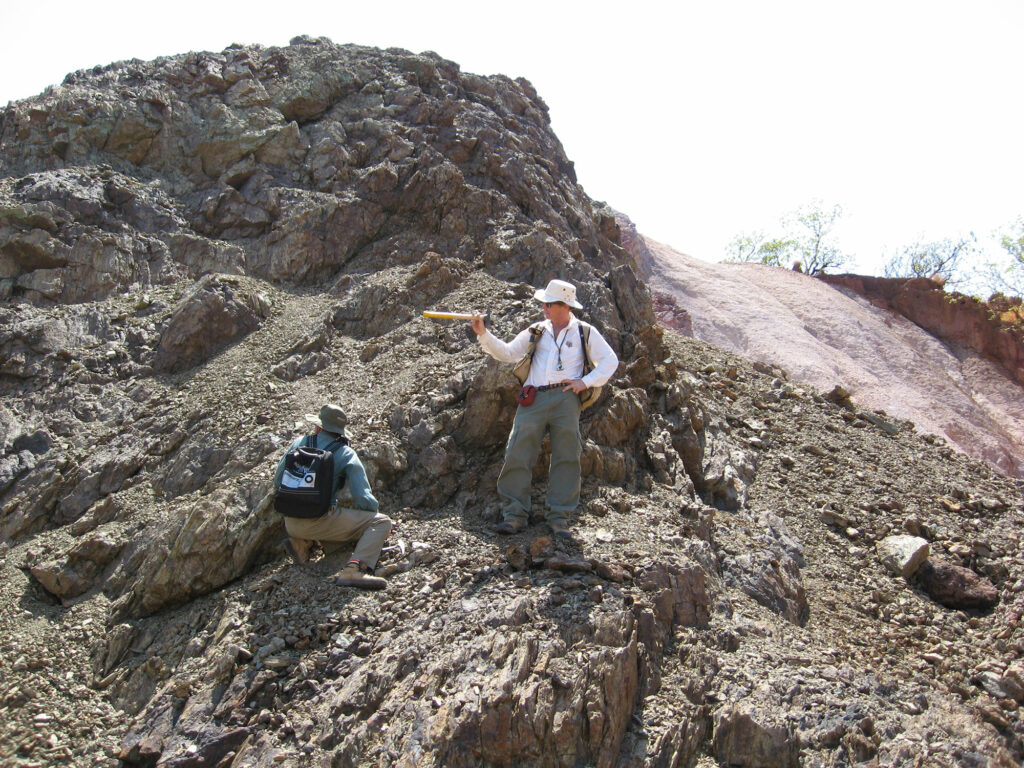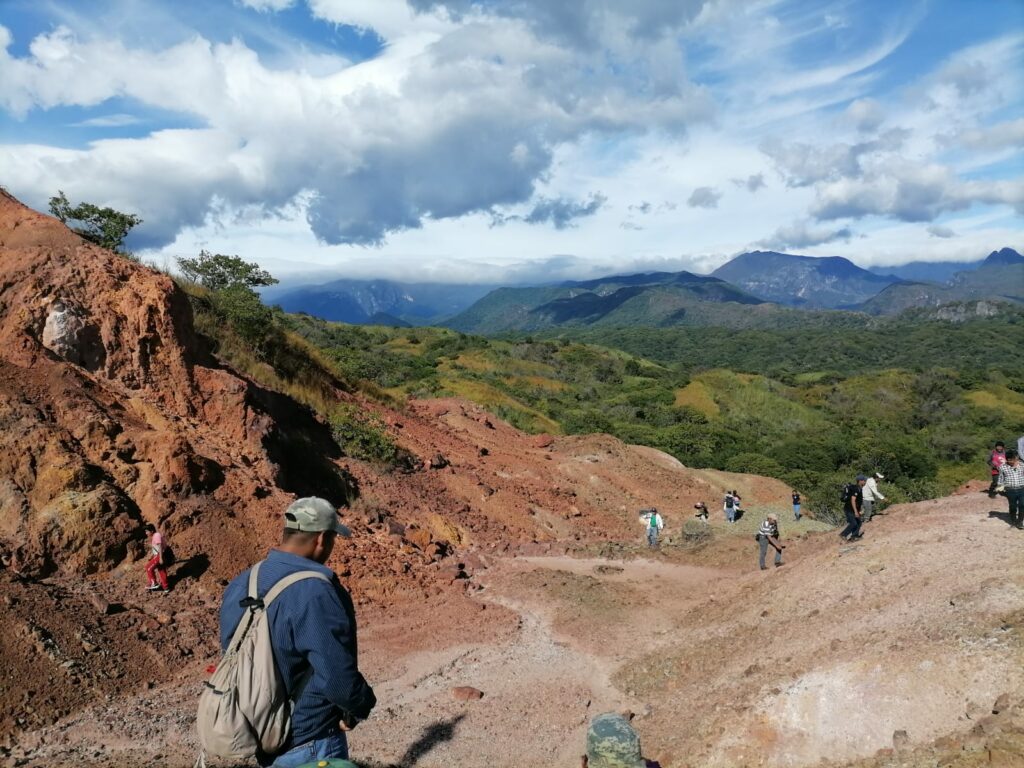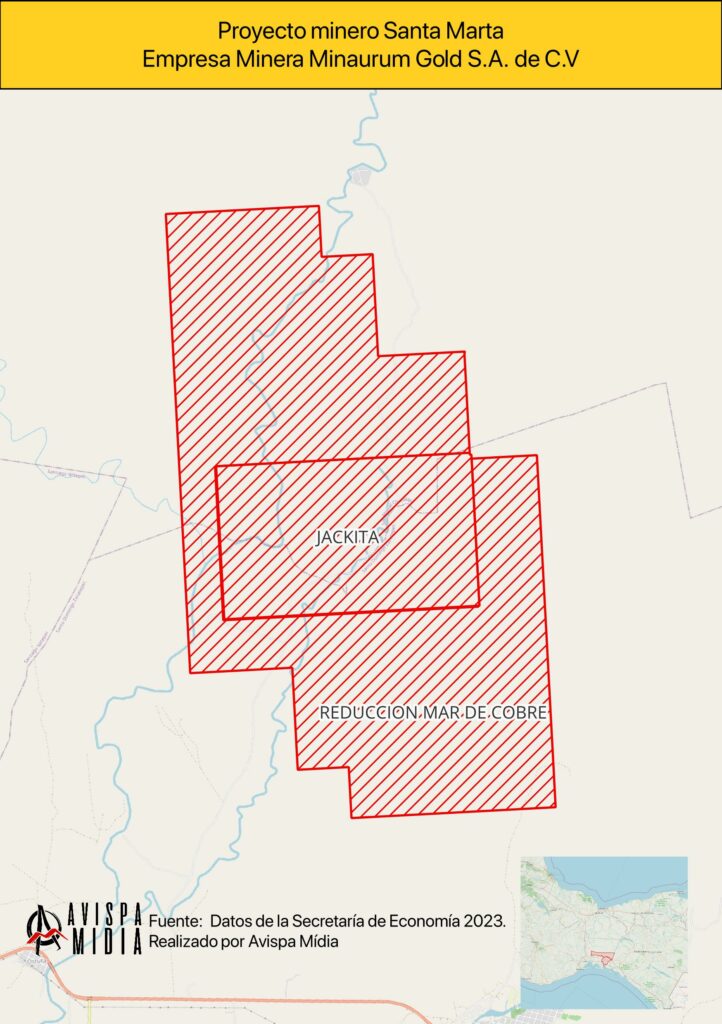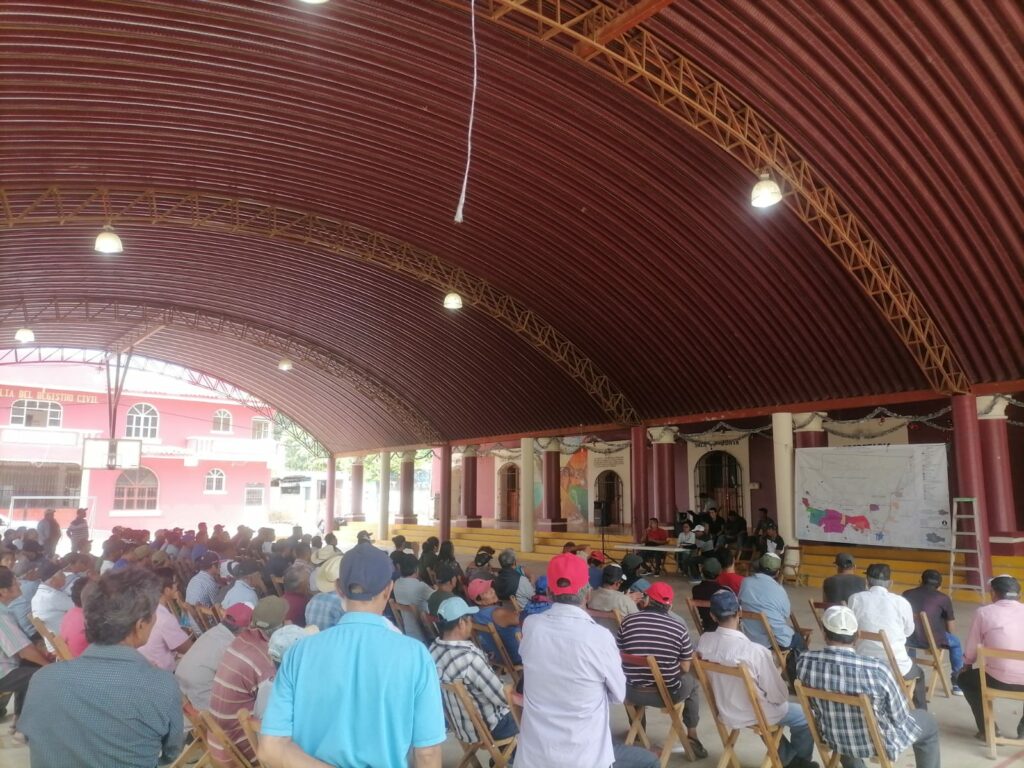In 2021, campesinos witnessed people passing through their territories with equipment. It caught their attention because it wasn’t people who were known in the region. They didn’t think much of it at first, but it turned out that they were engineers and technicians carrying out mining exploration in the municipalities of San Miguel Chimalapa and Santo Domingo Zanatepec, Oaxaca, one of Mexico’s largest tropical forest zones. The miners confirmed that, in the entrails of these mountains, there is a major gold and copper deposit.
Shortly before entering this region of the Zoque people, the Canadian company, Minaurum Gold S.A. de C.V., in 2021, sold 23,000 shares in Canada, raising $9.2 million Canadian dollars to continue exploration for its mining projects in Mexico. One of those projects is named Santa Marta.
The communal lands commissioner of San Miguel Chimalapa, Vicente Contreras, told Avispa Midia that they’d seen people pass through in 2021. “We decided to form brigades to surveil the territory and we found that in certain areas they had been removing land. So, we mobilized because we do not want mining in our territory,” he said.
According to information from the Secretariat of Environment and Natural Resources (SEMARNAT), obtained through the Platform of Transparency, the applications for the permits of Santa Marta had been rejected in the ruling UGA-0687-2021. The company was notified via certified postal mail on June 25, 2021.
A month after the supposed ruling of SEMARNAT, in July, Minaurum, to provide certainty to its shareholders, announced that it saw “more unlocked opportunity in some of the less advanced exploration projects, in particular Santa Marta, a potential volcanogenic massive (cooper and gold) sulfide project.”
The company’s announcement was even trumpeted by one of its most important investors, the asset management company, Crescar Capital, equating Santa Marta with the world class gold and copper deposit Hod Maden in Turkey, a project that holds reserves of 8,696 tons of gold and copper.
Although SEMARNAT maintains that the permits for Santa Marta were rejected in June of 2021, on their official platform the resolutions haven’t been made public. On the contrary, in requests for information, they sustain that it is “reserved and confidential.”
Minaurum solicited an exploration permit for a period of 12 months. If this had taken effect, it would have been from August 2021 until August 2022, right when people were seen passing through the area.
On the company’s website there are photos of their visits to the area, although they don’t mention the dates.


Geologists of Minaurum in the Santa Marta mine
The novelty is that the company sustains in a report from this year 2024, that the rock sampling carried out “has yielded copper values ranging from 1% and 3.7% copper and gold values reaching 3 g/t gold (grams for gross ton of rock),” according to its report called “Perspectives of Exploration 2024.”
Thus, Minaurum has advanced with the Santa Marta project and announced that it has updated its activities of exploration for 2024, including a new application for a permit of 3,000 meters of drilling, which implies a new Environmental Impact Report and a new process that SEMARNAT has to approve. Meanwhile, Minaurum is obligated to provide progress to its investors who have invested $9.2 million Canadian dollars.

Brigades that surveil the territory of San Miguel Chimalapa
The Strategy
The Santa Marta project encompasses two concessions located in the municipalities of San Miguel Chimalapa and Santa Domingo Zanatepec, both of which have legal conflicts in relation to their territorial boundaries. “The boundary problem is related to more than 13,000 hectares of land and it is there where this project is located,” said the commissioner of San Miguel Chimalapa.
The interesting thing is that when Minaurum applied for its permits for exploration in 2021, according the Environmental Impact Report (MIA) carried out by Asesores en Impacto Ambiental y Seguridad, C.S., they presented a copy of the resolution of the legal conflict related to the boundaries between San Miguel Chimalapa and Santo Domingo Zanaptepec. But the commissioner sustains that “the agrarian problem has still not been resolved. We have filed an appeal and it remains in the courts, so the conflict is not resolved.”
In 2019, SEMARNAT had already denied an Environmental Impact Report (MIA) to the company according to the document SEMARNAT-SGPA-UGA-0021-2019, with which it requested authorization for the realization of projects and activities in the two lots of the project.
But when Minaurum again requested the approval of a new MIA and permits for exploration, in 2021, the company’s legal representative, Daniel Jespús Ventura Uribe, presented more documents, this time only to carry out exploration in the Jackita lot. This was accompanied by a document certified by the notary with permission from the community La Cristalina, pertaining to San Miguel Chimalapa.
It is already known that mining companies in Mexico resort to various strategies to advance with the exploration and exploitation of minerals, one of them is dividing the communities and strengthening one side of the division. “It is what happened with the community La Cristalina, who supposedly gave permission to enter our territory to carry out exploration,” laments the commissioner Contreras, who has served the community for two years.
For the commissioner this is totally illegal, as they bypassed the ultimate authority. “Here no community is empowered to give that permission, not even me as commissioner. Because the communal statute establishes that the final word has to be taken up in a general assembly, where all of the community members participate. Thus, La Cristalina is not authorized to give permission. This is illegal”, explained the agrarian representative of the community.

Together the two mining lots, Reducción Mar de Sobre and Jackita, with corresponding updated title numbers 246936 and 225472, total an exorbitant dimension of more than 6,400 hectares, almost the equivalent of nine times that of University City of the UNAM.
Currently this company, through its affiliate Minera Zalamera, S.A. de C.V., has nine active concessions in the state of Oaxaca in the phase of exploration which make up more than 27,000 hectares. It also has a concession in Puebla, one in Morelos, two in Guerrero, and three in Sonora.
Water Dependence
The reserve of Los Chimalapas is internationally recognized. According to the National Commission for the Knowledge and Use of Biodiversity (CONABIO), in this region there are zones considered of “extreme priority for conservation,” because it is a large corridor that, together with other ecosystems, make the state of Oaxaca the most biologically diverse in the country.
The region is crossed by the Sierra Atravesada, the Sierra de Tres Picos, and the Sierra Espinazo del Diablo, along with the basins of the Corte and Alto Uxpanapa rivers. It includes the totality of the municipalities of Santa Maria Chimalapa and San Miguel Chimalapa, as well as parts of the municipalities of Matias Romero and San Pedro Tapanatepec, bordering to the east of the state of Chiapas.
The commissioner of San Miguel Chimalapa emphasizes that the majority of the people in the community dedicate themselves to agriculture and depend on the water. “What are we going to do if the aquifers are contaminated. Chimalapas feeds a great part of the communities, that is why we are concerned, because we are not going to eat gold. We live off the land. We depend on the water,” he warns
Neither the company nor the state has given them any information so far about what the exploration and possible exploitation of these mining lots means. “The only information that we have obtained is through forums that have been organized by youth from the community,” says Contreras, agrarian representative of the community. The commissioner maintains that the communities are adamant in not allowing extraction. “In different assemblies we have agreed not to allow mining exploitation in our territory. We are going to defend our territories,” says the Indigenous Zoque.

Forum carried out by youth from San Miguel Chimalapa


